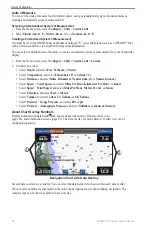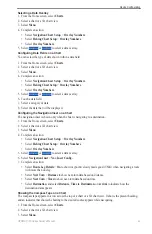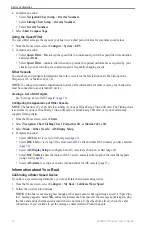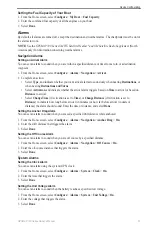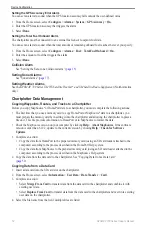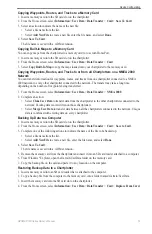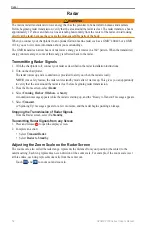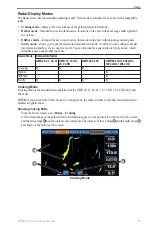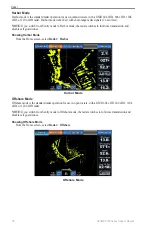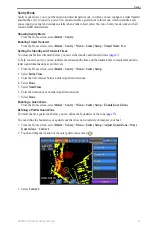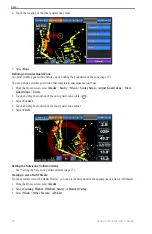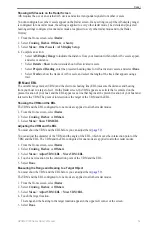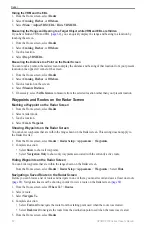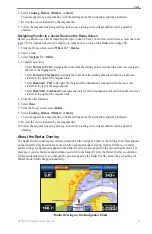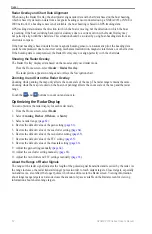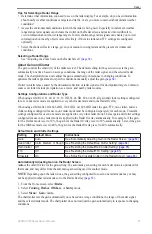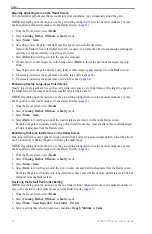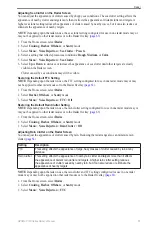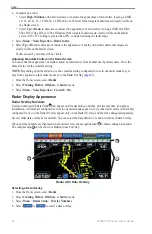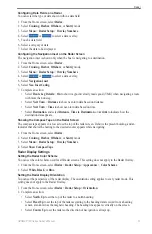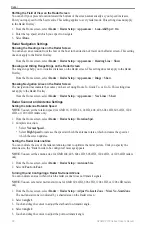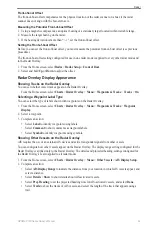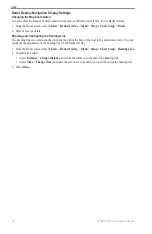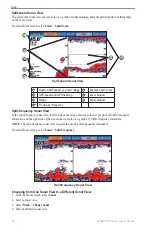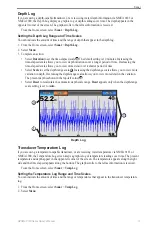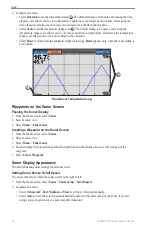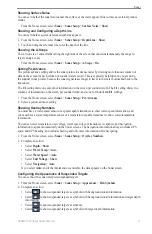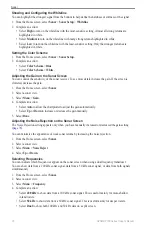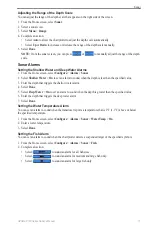
62
GPSMAP 700 Series Owner’s Manual
Radar
Radar Overlay and Chart Data Alignment
When using the Radar Overlay, the chartplotter aligns radar data with chart data based on the boat heading,
which is based by default on data from a magnetic heading sensor connected using a NMEA 0183 or NMEA
2000 network. If a heading sensor is not available, the boat heading is based on GPS tracking data.
GPS tracking data indicates the direction in which the boat is moving, not the direction in which the boat
is pointing. If the boat is drifting backward or sideways due to a current or wind, the Radar Overlay may
not perfectly align with the chart data. This situation should be avoided by using boat-heading data from an
electronic compass.
If the boat heading is based on data from a magnetic heading sensor or an automatic pilot, the heading data
could be compromised due to incorrect setup, mechanical malfunction, magnetic interference, or other factors.
If the heading data is compromised, the Radar Overlay may not align perfectly with the chart data.
Showing the Radar Overlay
The Radar Overlay displays data based on the most-recently used radar mode.
From the Home screen, select
Radar
>
Radar overlay
.
The radar picture appears in orange and overlays the Navigation chart.
Zooming In and Out on the Radar Overlay
Zooming while panning the map only affects the zoom scale of the map. The radar range remains the same.
Zooming while the map is locked on the boat (not panning) affects the zoom scale of the map and the radar
range.
Touch the
and
buttons to zoom out and zoom in.
Optimizing the Radar Display
You can optimize the radar display for each radar mode.
1. From the Home screen, select
Radar
.
2. Select
Cruising
,
Harbor
,
offshore
, or
Sentry
.
).
4. Restore the default value of the gain setting (
).
5. Restore the default value of the sea clutter setting (
6. Restore the default value of the rain clutter setting (
).
7. Restore the default value of the FTC setting (
8. Restore the default value of the crosstalk setting (
9. Adjust the gain setting manually (
).
10. Adjust the sea clutter setting manually (
).
11. Adjust the rain clutter and FTC settings manually (
About the Range of Radar Signals
The range of the radar signal indicates the length of the pulsed signal transmitted and received by the radar. As
the range increases, the radar transmits longer pulses in order to reach distant targets. Closer targets, especially
rain and waves, also reflect the longer pulses, which can add noise to the Radar screen. Viewing information
about longer-range targets can also decrease the amount of space available on the Radar screen for viewing
information about shorter-range targets.

